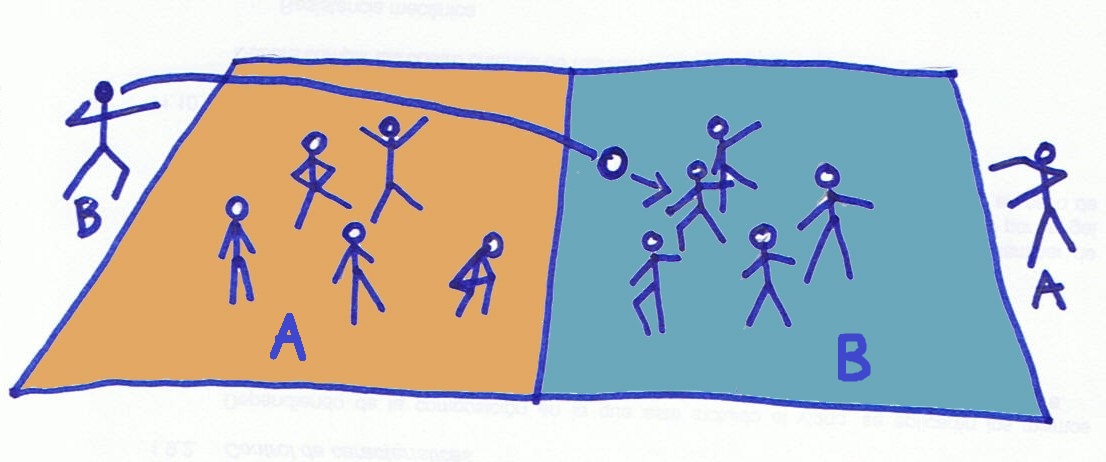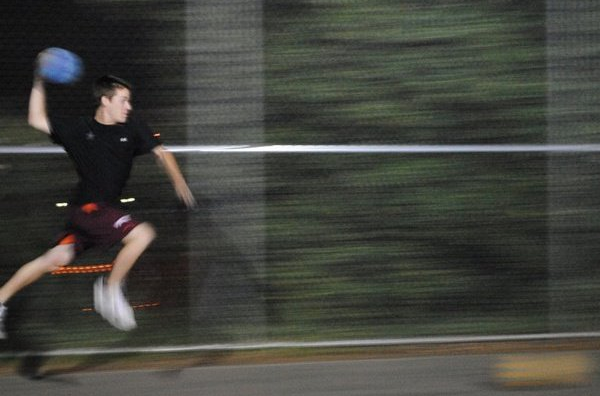 |
| ( Map from the TdF homepage) |
France! Wine! Paris! Bikes!
The 2015 Tour de France starts this Saturday, meaning that anyone who you live with / work with / share a bed with, etc., that cares about cycling will be engrossed in cycling TV and blog coverage (steephill.tv) so deeply that they might as well be auditioning for the “A Beautiful Mind” sequel. They’re going to talk your ear off about yellow jerseys, cadence, breakaways, and “top GC contenders,” whatever that means. They’ll assume you know everything in this video (youtube.com), use foreign words that you don’t understand, and correctly pronounce names like “Zdenek Stybar.”
You want to be excited with them, but you have a problem - you have no idea what goes on in the weird world of professional cycling beyond “isn’t that what Lance did?” How can you join in the conversation? How can you feel included in all of the chatter, speculation and excitement? How can you hope to pronounce everything correctly?
That’s where I’m here to help! I want to give you some conversational shortcuts so you can appear to be (and hopefully really become) interested in what is going on, because, once you get the hang of it, pro cycling is really interesting. So this guide comes in two parts - but it won’t be a “casual cycling fan’s guide,” because there are already lots of good ones (freewheelingfrance.com) that do that. You can read those, too!
This guide will take you through a crash course in what the Tour is about, and then give you a few questions to ask in casual conversation with your cycling fan friends so that you look like you know what you're talking about.
Off we go!
Part 1 - Questions you may have about the Tour
 |
| Some of the legends of the Tour |
Why is it called a “Tour,” and how do I know who wins?
You would think something called a “tour” would be about touring a place and seeing the sites - not so with the Tour. The Tour is a series of races through French (and sometimes not French) towns, countryside, and mountain passes. When you think of a “race” you usually think the winner is whoever gets from A to B the fastest, but the Tour isn’t like that.
The winner of the Tour is the guy who has the fastest (so, shortest) average time across all 21 races, or “stages,” of the Tour. This can be confusing for those new to watching the Tour, because it means that it’s possible for someone to win the Tour without winning even one of the 21 stages (like the American, Greg Lemond, did in 1990). The racer with the fastest average time during the tour wears the famous yellow jersey (or maillot jaune (pronounced “MAH-yo JAWn,” with a soft "j"), and the racer wearing yellow on the final day is the overall winner who wins bunches of cash and prizes and endorsement gigs.
Why is the Tour hyped so much?
Why is the Daytona 500 hyped so much when it’s just another auto race around an oval? Tradition. Legacy. Heritage. Story. The Tour is about the narrative of the race - the struggle and glory of individual efforts day after day. The Tour is more than a bike race - it’s a rolling parade, media extravaganza, and World Cup all rolled into one. Advertisers, journalists, fans, and the casual public all come out to both create and experience the spectacle. Crowds line the mountains to see the pain on the riders faces as they strain to breath and pedal at the same time.
Cycling in France is sort of like baseball in the US - you don’t have to follow the sport, but it’s part of your national heritage that you get to participate in. The Tour is where legends are made.
It starts in the Netherlands?!
Yup! Sometimes the Tour starts in another country; last year it started in Britain. Don't worry, though, it always ends in Paris!
Is every man racing for himself?
Nope! Professional cycling, and especially stage racing, is a team sport. If you look at the backs of the racers, you’ll see numbers pinned onto their jerseys. These numbers stay constant throughout the Tour, and let you know what team each rider is on. There are usually 22 teams of 9 riders each, for a total of 198 riders.
Numbers will then range from 1 to 219; #1 will be worn by last year’s winner, Vincenzo Nibali (“veen-CHEN-zoe NEE-buh-lee”), and the rest of his team (Astana) will be numbered 2-9. So you have the winner’s team, and then you have teams 1-21; the “#1” of each team is assigned to the team leader, the strongest racer on the team, and means that they’re easier to identify - #11, 21, 31, 41, 51, 61, etc. are the respective leaders of teams 1, 2, 3, 4, 5, and 6.
The other eight men on the team work for their leader - getting him food and water, pacing him up hills, providing a draft to shelter him from the wind, and offering their bike/wheel if he should crash or get a flat tire. Racing for 21 days is really hard, even with a couple rest days sprinkled in, and quite a few of these support riders (called domestiques (“doh-mess-TEEKS”), if you care) will drop out before the Tour is over. This is expected.
Also, not all the team leaders are expected to be able to win the tour - most teams are just riding the tour because of the thrill and prestige of it, and for the high exposure it nets their sponsors.
What’s a “peloton”?
Pronounced “PELL-uh-ton,” it’s French for “small ball” and refers to the largest bunch of cyclists racing. Sometimes there are smaller groups who try and breakaway for a winning move (you can learn about breakaways in this video (youtube.com)), and you’ll hear the race announcers refer to “the breakaway” being chased down by “the main peloton.”
Why do all the jerseys look so wild/dorky?
Let’s go back to the NASCAR analogy, because I think that’s really helpful. NASCAR exists to publicize sponsors, and so does the Tour. In fact, the Tour started as a marketing gimmick for a newspaper (the paper was printed on yellow sheets, hence the yellow jersey).
Just like how NASCAR cars are painted with the the sponsors colors and graphics (called “livery,” after the clothing that old-timey rich people would provide for their servants), so too do the livery of sponsors show up on cycling jerseys and shorts. Such livery is usually brightly colored, both to highlight the sponsor and to easily tell teams apart on TV; cycling races are often filmed from a helicopter, and bright, obnoxious colors and patterns make it easier to tell who’s who.
If you watch cycling year after year, it soon becomes really easy to identify riders at a glance because teams often use the same “kit” year after year; veteran fans will know that pink/blue is Lampre (“LAMP-ray”), red/black is BMC Racing, neon yellow/blue is Tinkoff Saxo (“tink-OFF SAH-kso”), white/red is Katusha (kah-TWO-sha), and blue/black is Team Sky (“sky”).
Also like NASCAR, fans are more tied to individual riders than they are to title sponsors; Jeff Gordon fans root for him whether he’s in #24 Dupont car or not, and likewise fans of Fabian “Spartacus” Cancellara don’t really care that he now rides for Trek Factory Racing instead of Team CSC. You can learn what each sponsor sells / does here (inrng.com).
Why are the bikes so ugly?
Hey, you noticed! The bikes are ugly because they are shaped to be aerodynamically efficient - to cut through the wind as smoothly as possible. Aerodynamics is a big deal in cycling, and so you see aerodynamic bikes, wheels (the thick rims and even solid discs sometimes seen), helmets, clothing and even shoe covers! For a pro racer, fighting the wind alone for even an extra two minutes can be the difference between winning or losing the Tour.
Who're the favorites to win, and how do I pronounce their names?
Vincenzo Nibali (Astana Pro Team, light blue kit), last year’s winner, is certainly a top choice. Other contenders are Chris Froome, the Brit on Team Sky who won in 2013, Alberto Contador (“KON-tah-door”), the Spaniard with Tinkoff Saxo, winner in 2007 and 2009, and Nairo Quintana (“NYE-row keen-TAH-nah”), the tiny Columbian riding for Movistar (“MOW-vee-star,” navy kit with neon green letters), the runner-up in 2013.
If you want to wash the stale Lance taste out of your mouth by rooting for America, the hopeful is Tejay van Garderen (“TEE-jay van-GUARD-wren”) from BMC who was both 5th overall and the fastest rider under age 25 in the 2012 Tour.
Hopefully that gives you some idea of what is going on. More technical stuff can be found in this article (inrng.com). On now to Part 2 and questions you can ask your cycling friends during Tour season to keep from feeling left out!
 |
| Jerseys help you tell teams apart! |
Part 2 - Questions to ask of the Tour
"Who's in yellow?"
This is just asking, “Who’s winning right now?” The yellow jersey can be worn by many different racers over the course of one Tour, depending on who’s fast on a particular day or who made a lucky move. The early stages of the Tour are usually flat and easy for the fast sprinters, so a sprinter might be in yellow for a few days. Once the race reaches the mountains, however, the sprinters usually lose the jersey, never to get it back. The yellow jersey can jump around a lot, like in the 1987 Tour when eight different riders wore it.
"Who's the top GC contender at the moment?"
GC stands for “general classification,” the fancy term for “overall winner.” Unlike the sprinters, GC contenders are the guys actually favored to win the whole Tour - Nibali, Froome, Contador, Quintana, etc. Top GC contenders are usually good in the time trials (the races against the clock) and the high mountain stages. Most TV news wrap-ups will include not just the winner for the day, but also the positions of the GC hopefuls.
"How is Romain Bardet and/or Thibaut Pinot doing?"
Remember what I said earlier about baseball? The Tour is a big deal for the national pride of France, and so as you would expect, there is a lot of pressure placed on the French riders. Ignore the fact that a Frenchman hasn’t won the Tour since 1985: just know that where the highest-placed French rider stands is a matter of some interest.
The French hopefuls this year are Romain Bardet (“row-MAIN bar-DAY”), riding in the brown/white of Ag2r (“Ay-gee-two-are”), and Thibaut Pinot (“TEE-bow PEE-know”), who was third last year and rides in the blue/white for FDJ (“Eff-dee-jay,” sometimes referred to by the full name Française des Jeux, or “frahn-SAY dey-JOOR”).
"Who won on Bastille Day?" (If it is after July 14th)
Bastille (bas-TEEL) Day is the day of French Independence, and every French rider in the peloton wants to win on that day. Again, think back to the legend, the drama, the story of the race.
"What do you think about including cobbles again this year?"
Racing over cobbles is a cycling tradition going back like 100 years or so, but cobbles are usually reserved for the one-day, A-to-B races in the spring, called Classics. Hitting cobbled roads at 30mph+ is hard on cyclists, and the guys who train to win stage races can be fragile people. Last year, Chris Froome abandoned the whole Tour after crashing on a cobbled stage. With cobbles comes drama: Who will soldier through them? Will anyone crash out? Will the the GC contenders play it safe, or attack?!
"When's the next mountain day?"
The mountain stages are the days when the GC really gets shaken up and the potential for drama is high. These are the days to watch!
 |
| The 1998 race leaders, suffering up a mountain |
"Has anyone's Di2 quit on them yet?"
Di2 (“dee-eye-two) is cycling shorthand for electronic gear shifting, first introduced by Shimano (“she-MAH-noh”) in 2009. Little, battery-pack-powered motors in the derailleurs shift the chain from gear to gear. It’s progress, sure, but sometimes the wires pop loose or something else bad happens, and when it does, the racer is stuck in one gear until their mechanic gives them a replacement bike.
Sometimes you see replay footage of some poor chap struggling up a mountain in way too high a gear, and fans who can’t afford the $1500+ price of electronic shifting for their own bikes will poke a little fun.
"What do you think about doping in cycling?"
There’s lots of speculation about this, but no one really knows anything for sure. This is a good question to ask if you feel your cyclist friend needs to talk for a long time but you don’t want to listen, because they will go on and on.
"Did you know that Sean Kelly never won a Tour?"
Like most sports fans, cycling fans are not above being full of useless knowledge, stats, and facts, and this fact can be yours. The Irishman Sean Kelly (“Shawn” Kelly) raced from 1979-1994 through the heat, wind, and rain, and into the halls of cycling legends.
Think of him as the “Iron Man” Cal Ripkin, Jr. of cycling. He often attacked with no teammates around him, eschewed using “clipless” pedals and shoes until one year before retirement (almost ten years after they were introduced), and yet won basically everything that was worth winning, except the Tour.
I’ve never heard anything bad about him, which makes him a sure bet for a winning conversation topic with any cycling fan. If you’re watching any of the races on Eurosport, he’s the commentator with the thick Irish accent. Some of his legend-ness can be viewed here (youtube.com)!
Summary
The three weeks of the Tour doesn’t have to be intimidating for anyone. On the contrary, they can be a time of learning, cheering, speculating, and watching history be made. Who knows, you might even get into a heated argument over some trivial issue, like real sports fans do!
Any more questions? Things I didn't cover?
Feel free to ask them in the comments below!
 |
| Sean Kelly, killing it in the 1988 Tour |
_DZ












